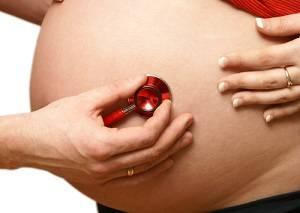
Large Babies at Risk for Birth Injuries

When you see headlines about babies weighing 10, 12, or even 14 pounds at birth, you might wonder how common this really is and whether such large babies are at a greater risk for some type of birth injury.
An estimated 7 percent of babies born in the US weigh more than 8 pounds, 13 ounces at birth, qualifying them for the medical term macrosomia, which means “large for its age.” Just 1 percent of all babies weigh in at 9 ½ pounds or more, the weight at which obstetrical best practices suggest a baby should be delivered by cesarean section.
A baby does not need to fall into the macrosomia category to be too large for a safe conventional delivery. A small woman with a narrow pelvis, for example, might be unable to safely deliver even an 8-pound baby. It is critical a physician considers both the size and shape of the mother as well as the size of the baby when making child delivery decisions.
Shoulder Dystocia Risk for Large Babies During Delivery
One of the greatest risks for a large baby during vaginal delivery is shoulder dystocia, which occurs when the baby’s shoulders are too wide to fit through the mother’s pelvis. When the baby becomes stuck in the birth canal this way, the umbilical cord could be compressed and the baby’s oxygen supply could be cut off.
If the baby suffers hypoxia (insufficient oxygen flow) during birth, it can result in brain damage. Shoulder dystocia can also cause Erb’s palsy. This condition is caused by damage to the brachial plexus nerves that run from the neck to the arm. These nerves can be stretched or damaged as the baby is being pulled out. Depending on the severity of the nerve damage, the child can suffer from numbness, weakness, or paralysis in the upper arm that prevents the arm from being raised and the elbow from being moved properly.
Preventing Birth Injuries to Large Babies
Birth injuries to large newborns are often preventable. First, a physician should provide appropriate advice to help prevent fetal macrosomia. Factors that raise the risk of an overly large baby include:
- Failure to control the mother’s blood sugar levels when she has diabetes or gestational diabetes. The mother’s high blood sugar can cross the placenta into the fetus, causing the fetus to produce more insulin and stimulate its own growth; and
- Failure to control the mother’s weight. The rate of macrosomia in the U.S. appears to have increased as adult obesity has increased. Overweight women should be counseled not to gain as much weight during pregnancy as would be acceptable for a woman with a lower pre-pregnancy weight.
Second, physicians should watch the development of a baby and counsel the mother regarding options for delivery when there is a chance the baby will be too large for the mother to deliver safely.
Third, women carrying overly large babies should be advised to deliver in a hospital where an emergency C-section can be carried out within a few minutes if complications arise during delivery and the baby appears to be in distress. A planned C-section or induction of labor might also be an appropriate recommendation.
Talk to a Skilled Cook County Birth Injury Lawyer
If you believe your obstetrician improperly handled the delivery of your baby and it resulted in a birth injury, contact an experienced Oak Lawn birth injury attorney immediately. For a free consultation, call Schwartz Injury Law today at 708-226-9000 for our Orland Park Office or 815-723-7300 for our Joliet office.
Sources:
https://www.usatoday.com/story/news/nation/2018/12/29/having-large-baby-safe-how-do-some-babies-get-so-big/2439782002/
https://utswmed.org/medblog/big-baby-birth/
https://healthblog.uofmhealth.org/womens-health/busting-big-baby-myths-an-ob-gyn-eases-fears-facts
 Free Camp Lejeune Case Review
Free Camp Lejeune Case Review






